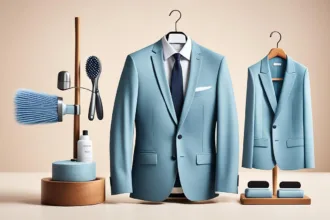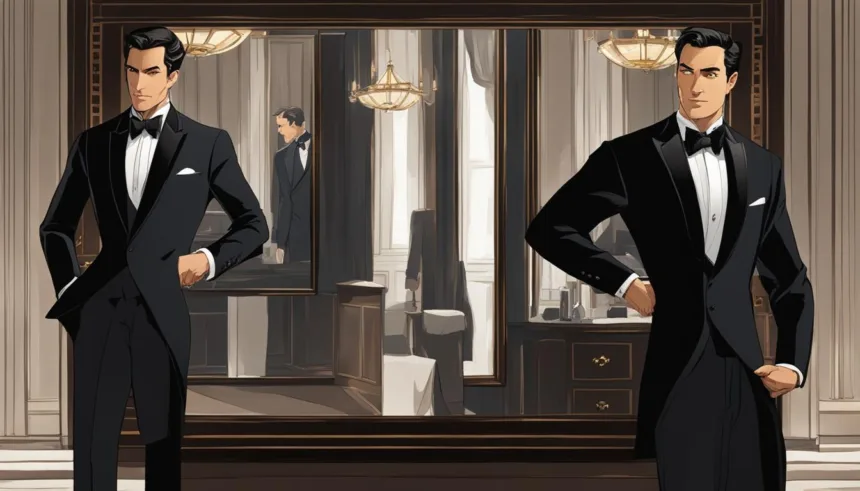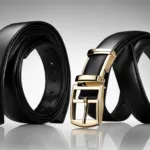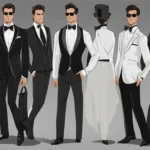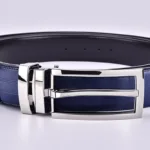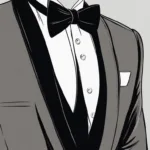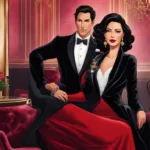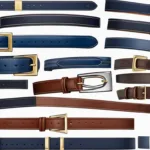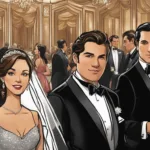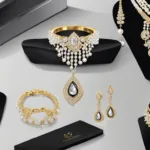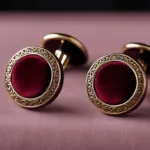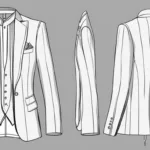When an invitation summons you to a black tie event, it’s an opportunity to engage in one of the most classic event styles; a world where elegance meets precision. Mastering the formal look necessitates a thoughtful understanding of the black tie dress code, a sartorial tradition that has held its ground amid evolving fashion narratives. This formal attire guide is your companion through the labyrinth of sartorial standards, ensuring that you arrive at your next evening soirée with confidence and style. Whether it graces the halls of a lavish wedding or an esteemed awards ceremony, black tie is the definitive statement of sophistication as the sun sets.
As symbols of prestige and decorum, events that call for black tie attire connect us to a time-honored dress etiquette, balancing between the austere white tie and the more relaxed business dress codes. Before stepping out, there is an art to be learned, one that weaves together the elements of style, fabric, and finish, ensuring your presence is nothing short of captivating. Let’s unravel the threads of this storied attire with insights that illuminate every aspect of the black tie ensemble.
Key Takeaways
- Gain clarity on what constitutes the black tie dress code.
- Learn the vital components that form a flawless formal look.
- Discover the fine line between classic guidelines and modern adaptations.
- Recognize the significance of event timing in choosing black tie apparel.
- Equip yourself with knowledge to navigate the spectrum of formal events with ease.
The Essence of a Black Tie Event
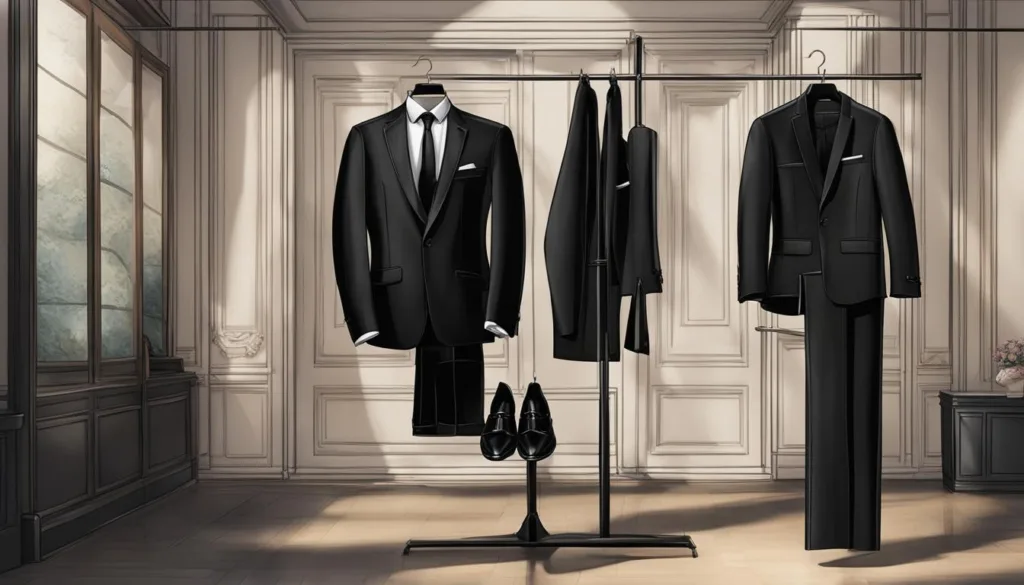
Stepping into a black tie event, one finds themselves amid a legacy of elegance and decorum. Understanding black tie requirements is essential for navigating these sophisticated gatherings, where the evening’s attire speaks volumes of tradition and modern style influences.
What are Black Tie Events?
At its core, a black tie event definition hinges on exclusivity and formality. These events typically occur post-sunset and call for a specific standard of dress. A step below white tie in formality, yet vastly more formal than your everyday business suit, black tie functions include galas, operas, weddings, and more—each demanding a polished presentation.
Time to Suit Up: The Evening Formal Wear
When delving into evening formal wear, a timeless black wool tuxedo remains the sine qua non. Designed with satin peak lapels that offer a subtle sheen under dimmed chandeliers, it is the quintessence of black tie fashion. For trousers, a satin stripe accenting the outseam reinforces the formality of a man’s ensemble.
While tradition reigns supreme, there’s room for personal interpretation within these parameters. The midnight blue velvet jacket, for instance, has gained acceptance for its ability to appear even more sumptuous than black in the luminescence of evening affairs. This subtle nod to modernity within the black tie event’s heritage allows for individuality amidst the uniformity.
Whether you’re a seasoned attendee or a newcomer to the sphere of high-end events, adherence to these prescribed codes is more than a matter of fashion—it’s a statement of respect for the occasion’s grandeur and an opportunity to showcase one’s style within established boundaries.
Decoding the Black Tie Attire Basics
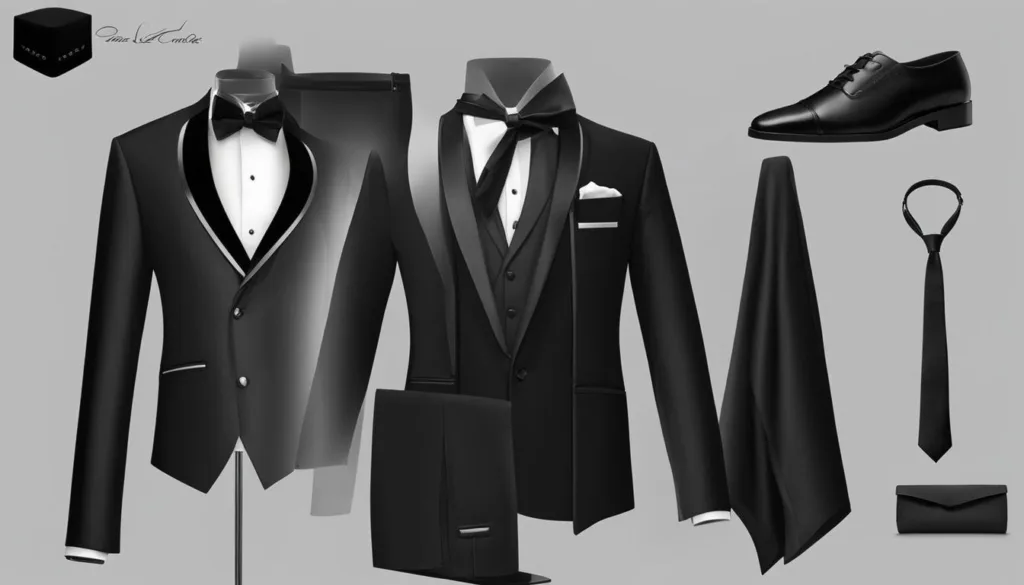
When it comes to black tie attire basics, sartorial precision is key. Although the dress code for black tie events seems straightforward, the devil is truly in the details. Understanding the event attire essentials is paramount for making the right impression at any gala, formal dinner, or elegant soirée.
At the heart of the traditional ensemble is the tuxedo. Accompanying this staple, a classic white dress shirt is non-negotiable. Men should look out for shirts with a Marcella bib front, a neat turndown collar, and the necessary double cuffs—specifically designed to pair with cufflinks. Below, we’ve detailed the basic components one must gather to fulfill black tie requirements.
| Garment | Details | Preferred Fabric |
|---|---|---|
| Tuxedo Jacket | Satin peak lapels, single-button | Wool |
| Trousers | Matching jacket, satin stripe on outseam | Wool |
| Dress Shirt | Marcella bib front, turndown collar, double cuffs | Pure Cotton |
| Bow Tie | Black, silk, hand-tied preferred | Silk |
| Footwear | Black, patent leather or polished calf | Leather |
When it comes to footwear, one cannot overlook the significance of a well-polished pair of black, patent leather Derbies—regarded as the quintessential choice. However, for those seeking a touch of avant-garde or in the comfort of a private setting, velvet slippers can offer an acceptable, yet stylish, alternative.
A silk bow tie, preferably tied by hand, seals the ensemble with a touch of traditional grace. While pre-tied versions are available for convenience, learning to tie a bow tie adds depth to your engagement with the black tie experience.
Regardless of trends, the foundations of black tie attire are immovable, honoring a legacy of elegance that transcends the whims of fashion. Adhering to these guidelines ensures that you will maintain a distinguished presence in any black tie setting.
Black Tie Dress Code Explained
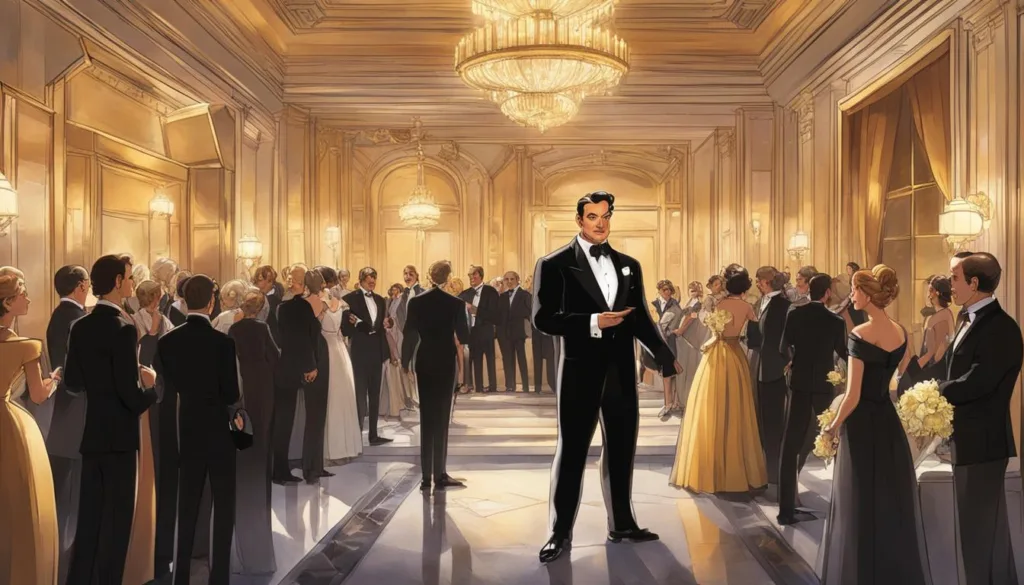
At the heart of every formal event is a heightened sense of style and conduct, which the black tie dress code encapsulates perfectly. Understanding and adhering to this dress code ensures you project elegance and sophistication at any high-caliber event. Whether you’re attending a gala, an opera, or a sophisticated wedding, the black tie dress code explained here will help you in navigating black tie events with confidence.
For men, the standard is clear: a sharp dinner suit or tuxedo, impeccably tailored to fit like a glove. Complementary to this is a pair of polished black dress shoes—oxfords or patent leather shoes are the perfect match. Achieving a look that balances traditional expectations with a hint of individual flare is key when dressing for such occasions.
Accessories play a pivotal role, yet they should be deployed with restraint. Aim for no more than three accessory items, ensuring each one is chosen to complement rather than overwhelm your attire. This could include:
- A dress watch with a gold or sleek black leather strap
- Classic cufflinks, perhaps in silver or mother-of-pearl
- A crisp white pocket square, folded neatly
The goal is to align with the formal event dress code while allowing a touch of your personal aesthetic to peek through. It’s a harmonious blend of tradition with a dash of modern sophistication.
Remember, the black tie is more than just a dress code—it’s an overall experience. As you prepare for your event, bear in mind that the confidence you carry in your appearance will complement your attire, making for a truly distinguished presence. With this guide to the black tie dress code explained, you’re well on your way to mastering the look for your next formal engagement.
Navigating the Black Tie Outfit Guidelines for Men
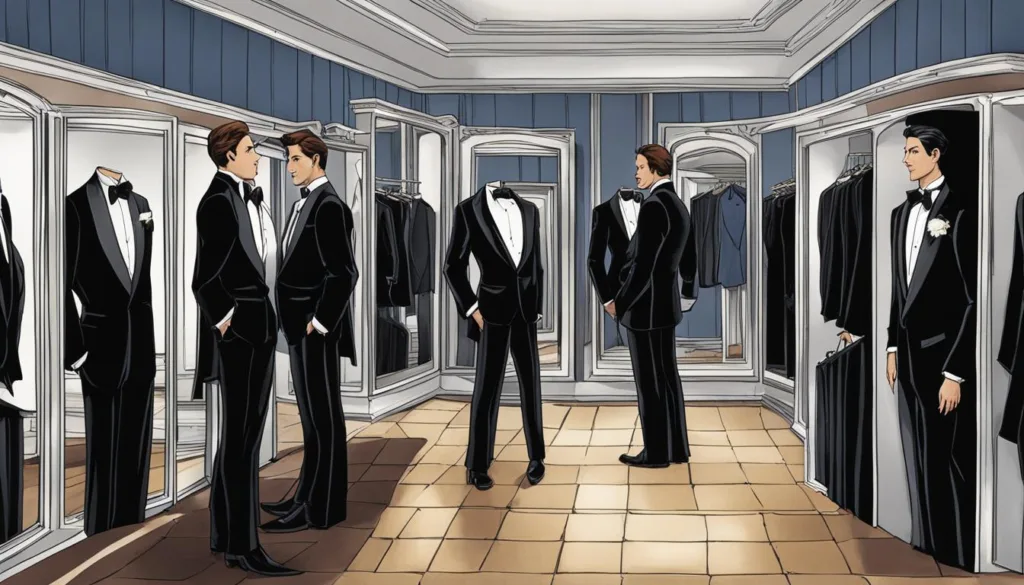
Adhering to the black tie dress code for men is not just about picking the right kind of suit; it’s an art of selecting pieces that reflect sophistication and timeless elegance. From the tuxedo to the smallest accessory, each component plays a significant role in crafting the perfect black tie outfit.
The Tuxedo: A Timeless Statement
As the centerpiece of the black tie outfit, the tuxedo exudes a sense of grandeur and formality. A well-tailored tuxedo, characterized by sleek satin lapels and a contoured fit, not only flatters the wearer but also adheres to the stringent black tie dress code for men. When it comes to tuxedo selection, investment in quality fabric and craftsmanship ensures that the tuxedo stands the test of time and numerous black tie events.
Chic and Sophisticated: Dress Shirts and Trousers
Accompanying the tuxedo, the trousers and dress shirt lay the foundation for a truly polished appearance. Trousers with a satin stripe elevate the ensemble, matching the lapels of the tuxedo for a seamless look. For the shirt, white remains the color of choice, with dress shirts for black tie events typically featuring double cuffs to accommodate elegant cufflinks, adding an extra touch of sophistication to the entire outfit.
The Finishing Touch: Dress Shoes and Bow Ties
Finalizing the black tie outfit is a pair of lustrous black patent leather shoes, contributing to the cohesive, stately look desired at formal events. When selecting a bow tie—integral to black tie outfit guidelines—opting for hand-tied silk signifies a commitment to traditional sartorial standards, although pre-tied alternatives can suffice in a pinch. Proportion is key; the bow tie should balance the wearer’s facial features and collar size to maintain an impeccable profile.
Crafting the Perfect Ensemble: Black Tie Wardrobe Essentials
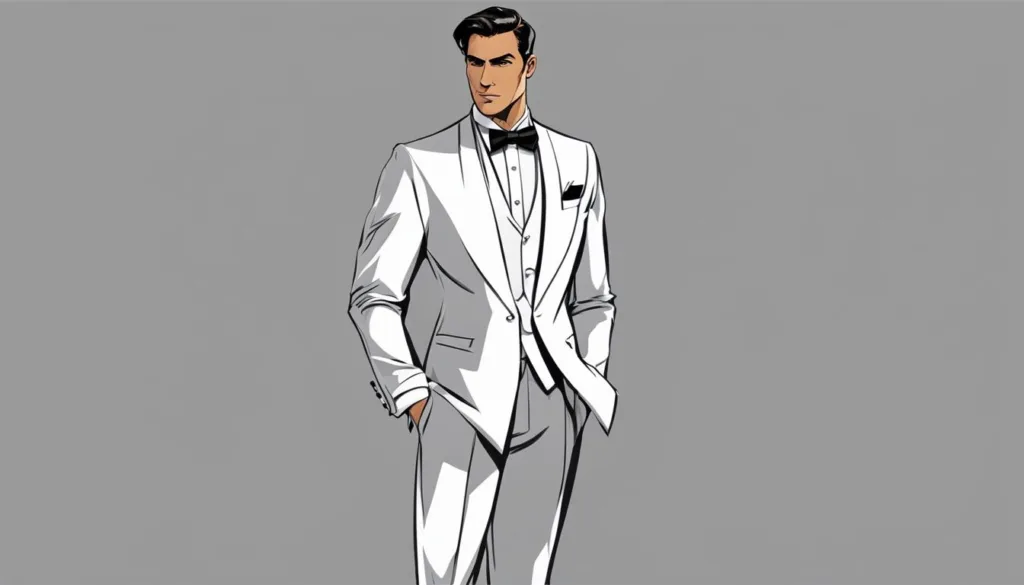
When assembling the perfect black tie ensemble, attention to detail is paramount. Accessories are not just adornments, they are the components that signify a deep understanding of formal attire and elegance. From the shine of a cufflink to the crispness of a pocket square, each piece contributes to the overall impact of your presentation at a distinguished event.
Elevated Accessories: Cufflinks, Pocket Squares, and More
Sophisticated and considered choices in accessories distinguish an acceptable black tie wardrobe from an exceptional one. Many style aficionados argue that these finer points are what elevate an outfit to black tie wardrobe essentials. Here are some timeless selections:
- Cufflinks: Opt for silver, gold, or mother of pearl to maintain a classic aura.
- Pocket Squares: White linen or silk, elegantly folded, is a necessity for a sharp look.
- Dress Watches: A subtle, classic watch with a black leather strap can complement your wrist subtly.
The right accessories can transform the perfect black tie ensemble into an exquisite display of personal style and sophistication.
Understanding the Role of the Cummerbund in Black Tie Attire
The cummerbund significance lies in its ability to provide a seamless transition between the shirt and trousers. This traditional piece not only adds a layer of refinement but serves a practical purpose by concealing any unsightly waistband or shirt gathers. Here’s how to incorporate a cummerbund into your attire:
| Material | Color | Pleats |
|---|---|---|
| Silk | Traditionally Black | Upward Facing |
| Satin | Matching Jacket Lapel | Ensure Pleats are Neat |
A cummerbund should be considered when creating a perfect black tie ensemble for events that call for a strict adherence to classic formal dress codes. While it can be omitted for a more contemporary look, when chosen, it provides a nod to the traditional elegance of formal wear.
The Dos and Don’ts of Black Tie
Navigating the intricacies of black tie attire can be a daunting task. To ensure that you meet black tie event expectations and maintain the required decorum, it’s essential to understand the fundamental rules that come with this prestigious dress code. Presenting yourself appropriately at such events not only shows respect for the occasion but also enhances your own sense of style.
Essential Tips for Maintaining a Formal Look
When dressing for an occasion that stipulates a black tie dress code, there are certain non-negotiables that ensure you stay within the stylistic boundaries. Maintaining a formal look is crucial, and some indispensable elements include:
- A tailored tuxedo is the cornerstone of black tie attire—opt for high-quality fabrics and a fit that complements your physique.
- Accessories should be selected judiciously; a pair of elegant cufflinks, a silk bow tie, and a classic timepiece are often sufficient.
- Shirts should be pristine white with double cuffs to accommodate your chosen cufflinks and provide a sharp contrast to the tuxedo jacket.
- Choose braces instead of belts to maintain the smooth line of the tuxedo and avoid bulging at the waistline.
Sartorial Pitfalls: What to Avoid at a Black Tie Event
As much as knowing what to include in your ensemble is key, being aware of the items and styles that detract from a black tie outfit is equally important. Some common mistakes to avoid are:
- Never wear a white bow tie which is exclusively reserved for white tie occasions.
- Avoid casual clothing items like jeans, sneakers, or business-casual attire that undermine the formality of the event.
- Stay clear of any distracting patterns or non-traditional colors on ties or shirts that could break the cohesive formal look.
- Belts are a no-go; they can clash with the lines of the tuxedo and are an unwelcome informal element.
By adhering to these Dos and Don’ts of black tie, you will be able to confidently enjoy your evening, knowing that your attire is impeccable and befitting the esteemed nature of the occasion.
Understanding Black Tie Requirements for Different Events
Decoding the formal event dress code is vital for attendees eager to honor the expectations of a black tie event. Amidst the black tie event variations, subtleties in invitation wording or venue choice often act as an informant to the level of formality required. To align perfectly with formal event expectations, one might consider the nuances that distinguish one black tie affair from another. Below are some points to help guide guests in preparing for these occasions.
- Clarify with your host if the black tie guideline leans more towards traditional or has room for contemporary interpretations.
- Factor in the type of event, whether it’s a charity gala or a company award dinner, to adjust the sophistication of your attire.
- Consider the time and location of the event. Outdoor evening functions or day-to-night events may have different expectations.
For ladies, while a floor-length evening gown is the quintessential choice, fashionable variations such as an elegant cocktail dress or designer tuxedo suit are also widely accepted in modern black tie settings. The key is to maintain a balance between tradition and personal style, ensuring the look remains refined and appropriate for the level of formality.
Regarding accessories, they are the silent communicators of individuality and taste. Here are some insights:
- Select accessories that complement, but do not overpower, the formality of your ensemble.
- Men might opt for a subtle pocket square or classic timepiece, while women could choose statement jewelry or an elegant clutch to enhance their look.
- Always adhere to the unspoken rule of ‘less is more’ to maintain the sophisticated aura of black tie attire.
In conclusion, being well-prepared for a black tie event means considering all factors – from the type of event to the specifics of location and host expectations. Remember, when it comes to formal event attire, it is better to be slightly overdressed than underdressed. When in doubt, reach out to your host or a seasoned black tie event-goer for guidance. This ensures that your interpretation of black tie attire is impeccable and up to par with the event’s prestige.
Embracing Modernity: Taking a Contemporary Approach to Black Tie
The realm of formal attire is steeped in tradition, yet it is not impervious to the touch of modernity. When considering taking a contemporary approach to black tie, it’s important to understand where subtle innovations can play a role. Though the foundation of formal wear remains relatively unchanged, today’s fashion-forward individuals have viable options to express personal style within the classic framework.
Breaking the Mold: Alternative Styles in Black Tie Dressing
Alternative black tie styles are increasingly acknowledged at many formal events, offering a refreshing twist to the standard. By embracing darker shades like midnight blue, men attest to their adherence to the black tie ethos while showcasing a nuanced fashion sense. Introducing textures and patterns through accessories such as cufflinks or pocket squares can also make a distinctive, yet tastefully understated impact. The principle lies in balance – ensuring that any deviations from norm don’t detract from the overall elegance of black tie attire but rather enhance it.
Seasonal Variations: Adapting to Climate and Locale
Seasonal black tie adaptations recognize the practical aspects of attire, allowing for comfort without sacrificing formality. In warmer climates or outdoor events, a pristine white dinner jacket becomes appropriate, serving both aesthetics and functionality. Locations with cooler climates or more conservatively styled venues might call for a heavier use of wool or velvet in the attire. Ultimately, choosing the right ensemble involves an acute awareness of context, ensuring that your look is not only stylish but relevant to the occasion and setting.
